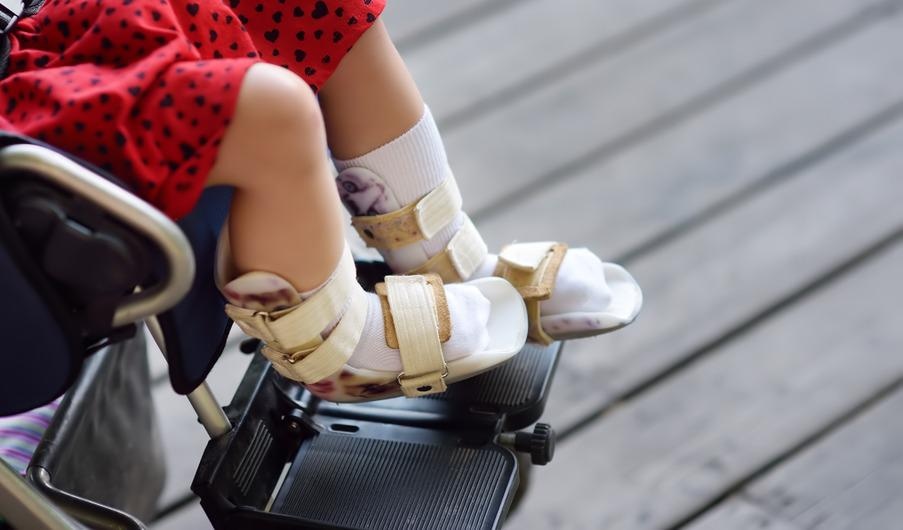A new study in the journal Materials Today suggests the creation of a green composite for the implementation of orthotic callipers utilizing bagasse filler strengthened with epoxy. Orthotic callipers are a device used by individuals who have impaired or weak joints.

Study: Bagasse reinforced epoxy-based green composite for orthotic callipers: A tribological study. Image Credit: Maria Sbytova/Shutterstock.com
The tribological characteristics of the composite material were examined following the manufacturing of the composite using the hand layup method. Mechanical qualities such as tensile strength and flexural strength improved as a result of the research.
Appliances for Impairment
Almost one billion individuals worldwide suffer from one or more types of impairment. One such handicap considered in this research is connected to gait movement. People suffering from poliomyelitis are primarily affected by this handicap. Poliomyelitis is a contagious disease that can result in either temporary or permanent paralysis. Spinal poliomyelitis is a prevalent form of paralytic poliomyelitis.
They require an appliance that can give them comfort while also being personalized to their condition and demands. Orthotic callipers, commonly known as braces, are devices/appliances or prosthetics used to improve human walking. They also provide assistance to individuals with weak joints, ligament and tendon contracture, optimal alignment, and leg support.
The Best Designed Orthotic Callipers
Material information is essential for creating appropriate orthotic callipers. It is critical to utilize a material that is eco-friendly, lighter in weight, has a strong specific strength and stiffness, has low radar visibility, has strong endurance and damping resistance, has low thermal expansions, is biodegradable, and can be molded into complex shapes.
Composite materials have led to the creation of materials that are lighter in weight, have a high strength-to-weight ratio, have better tensile strength, are stiffer, and are less expensive. When the appliance needs natural fiber and natural resins are blended with composite materials elements to build light and strong substances that are also biodegradable and ecological, composite materials are referred to as green composites or bio-based composites.
The current study suggests the production of a green composite employing bagasse filler strengthened with epoxy for the implantation of orthotic callipers, taking into account environmental problems, depletion of natural resources, and petroleum products.
How Roughness, Hydrophobicity, and Surface Charge of Prosthetic and Orthotic Materials Affect Bacterial Adhesion
They are composites because they are made up of two or more separate constituent components that have distinctive physical and chemical characteristics. Alkali-treated bagasse fiber with 5% aqueous sodium hydroxide solution was utilized to extract pectin and hemicellulose solution for composite manufacture.
Method to Make the Newly Orthotic Callipers
The tribological testing was carried on a pin-on-disc multi-tribotester at room time and temperature to determine the friction coefficient and specific wear rate of the composites. Tribological testing is performed on the composite to determine the device's lifetime and service circumstances. The test consists mostly of two solid specimens in interaction with the surrounding environment and the lubricant.
To assess the friction coefficient and particular rate, testing was performed at a rotational velocity of 120 rpm with a standard load of 20 Newton. The outcome is analyzed and shown. The friction factor of thermoset-based composites is low due to the self-lubricating characteristic of the reinforcing fibers.
For the correct interaction between both the matrix and the fiber, a specific wear rate can be calculated. Because the matrix keeps the fibers together and passes the load to the fibers, the composites do not easily separate. Tribology test is used as a systemic approach that involves surface degradation and material loss, which results in wear at surface contact.
The Advantage of Newly Orthotic Callipers
The proposed analysis considers thermoset-based composites, i.e., epoxy with bagasse fiber, as an alternative source for the manufacture of orthotic calipers. Because of their low strength-to-volume margin, composite materials have begun to replace synthetic materials, and they may be evaluated as one of the substances for orthotics.
Because polymeric materials are easily manufactured and natural fibers are abundant, they are used as the matrix and reinforcement, correspondingly.
Aluminum, which is currently utilized for orthotics, rubs against one another and causes wear and tear along the connections given. So, to prevent wear and friction, bagasse was strengthened with epoxy to improve patient comfort.
Because the proposed material has the lowest friction and specific wear rate, it is recommended that it be replaced; nevertheless, other characteristics such as wear, machinability, and buckling should be investigated prior to commercialization.
Further Research
The friction factor of thermoset-based composites is low due to the nature of the reinforcement materials. Different combinations of composites for the matrix and fiber can be used in future study. As the fibers are held together by the matrix. Different composites can be combined in order to detect the matrix transfers and loads to the fibers.
References
Kumari, N., and Sarangi, S. (2021). Bagasse reinforced epoxy-based green composite for orthotic callipers: A tribological study. https://www.sciencedirect.com/science/article/pii/S2214785321071443?via%3Dihub
Disclaimer: The views expressed here are those of the author expressed in their private capacity and do not necessarily represent the views of AZoM.com Limited T/A AZoNetwork the owner and operator of this website. This disclaimer forms part of the Terms and conditions of use of this website.